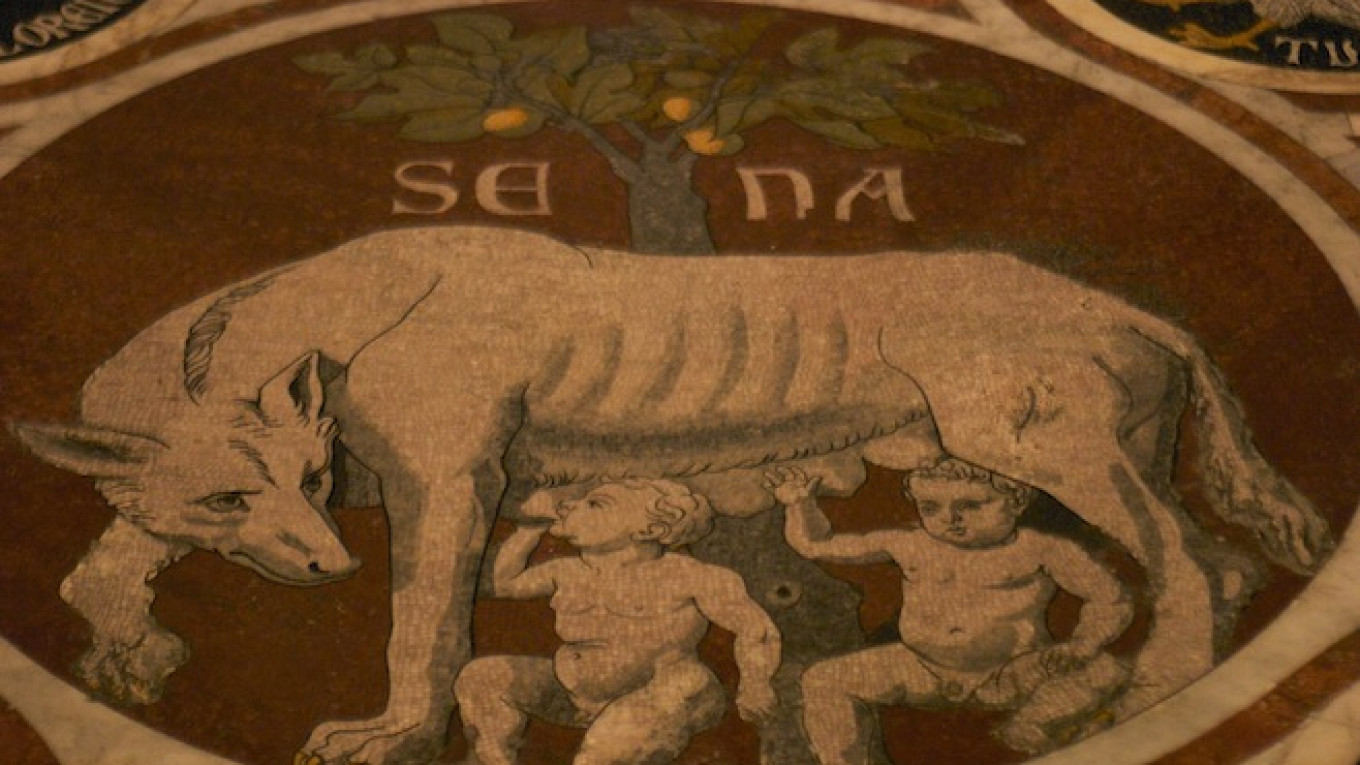A rare Roman coin dating back to the fourth century AD has been found at an excavation site in Russia's Veliky Novgorod, a news report said.
The copper coin, which was discovered Friday, "bears the image of a she-wolf with Romulus and Remus — the founders of Rome — on one side, and the image of a Roman goddess on the other side," Oleg Oleinikov, head of the excavation expedition, told Agence France-Presse on Monday.
The coin, which dates back to the time of Roman Emperor Constantin I, is so far the oldest of about 4000 artifacts discovered in the city following an excavation organized by the Archeology Institute of the Russian Academy of Sciences.
Constantine I, otherwise known as Constantine the Great, is venerated as a saint by the Eastern Orthodox and Byzantine churches, and it is thought that the coin's owner wore it as a Christian relic, ITAR-Tass reported Monday, citing Oleinikov.
The discovery marks "a new page in the history of ties between Constantinople and Russia of those times," Oleinikov was quoted as saying by AFP.
See also:
Russian Miners Freaked After Digging Up 'Devil's Ear'
A Message from The Moscow Times:
Dear readers,
We are facing unprecedented challenges. Russia's Prosecutor General's Office has designated The Moscow Times as an "undesirable" organization, criminalizing our work and putting our staff at risk of prosecution. This follows our earlier unjust labeling as a "foreign agent."
These actions are direct attempts to silence independent journalism in Russia. The authorities claim our work "discredits the decisions of the Russian leadership." We see things differently: we strive to provide accurate, unbiased reporting on Russia.
We, the journalists of The Moscow Times, refuse to be silenced. But to continue our work, we need your help.
Your support, no matter how small, makes a world of difference. If you can, please support us monthly starting from just $2. It's quick to set up, and every contribution makes a significant impact.
By supporting The Moscow Times, you're defending open, independent journalism in the face of repression. Thank you for standing with us.
Remind me later.






